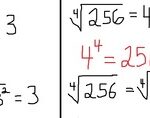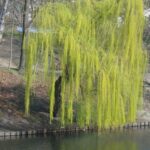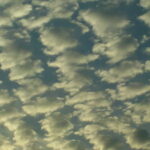Some 14 or so years ago Dr. Francis Baker received this tree in place of a weeping cherry that she had ordered. Someone in the growing fields had accidentally put the wrong label on it. The good doctor soon realized that it wasn’t a weeper but she didn’t immediately realize that this wrongly named tree would quickly outgrow its location.
When the tree had to go, the Zirkels, owners of a new home and garden, volunteered to move it. It was a tough job and much of the root system had to be sacrificed. To balance the loss of roots, Helen Zirkel out the top back. The tree stood still for awhile, then began responding to the loving care it received. Today this adopted tree has a trunk that measures a foot in diameter and a top spread of about 20 feet and a height of around 12 feet. It has great masses of soft pink ‘blossoms hanging in thick clusters all over every limb. In the fall the foliage becomes a bright orange-red before it drops.
The cluster flowering of the soft pink blossoms along with the orange-red fall coloring lead us to believe that this tree is an offspring of the Sargent cherry. The cherry tree that Doctor Baker wanted was Prunus subhirtella pendula, the single flowered form, that opens its small, light pink blossoms in April and May when the tulips flower. There is a double flowered form with the Japanese name “Yaeshidare-higan” but the flower color is rose pink and it blossoms a week or two later.
Weeping cherries, as the “pendula” types are commonly called, are usually sold as grafted plants. The scions of the weeper are placed five to six feet high on an upright-growing understock. This allows the graceful, pendulous branches to hand down almost to the ground. Doctor Baker was replacing a weeper that she had lost when she received the mislabeled tree. In searching for the cause of death of the first weeper she was told the trunk overgrows the graft and strangles it. She was told could be prevented by splitting the bark on the trunk. On her present tree she has split the bark on each side of the tree from the graft to the soil line and these splits have now widened to over half an inch.
I do not advise splitting the bark on a very young weeping cherry. However, a weeping cherry four to five years old might have the bark split. Remember the split must be up and down the trunk, not around it. Flowering cherries have few requirements but these are important. They must have a location with excellent drainage and a soil that is well aerated. Both of these needs can be taken care of at planting time. If your soil is heavy clay, make a raised bed for your tree or dig an extra large planting hole and place drain tile in the bottom that will lead the water away from the roots. The aeration problem can be taken care of by mixing the planting soil with an equal amount of soil conditioner such as chopped bark that has been treated with nitrogen.
I have never had pests or disease trouble in my cherry trees but friends have told me of caterpillars and twig dieback a few times. The caterpillars were controlled with an insecticide and the dieback by cutting the branches back to healthy wood and spraying the tree with a fungicide containing copper. After a wet winter and spring such as I have just had a couple of copper spray applications immediately after the petals fall could be a wise move.
http://en.wikipedia.org/wiki/Prunus



